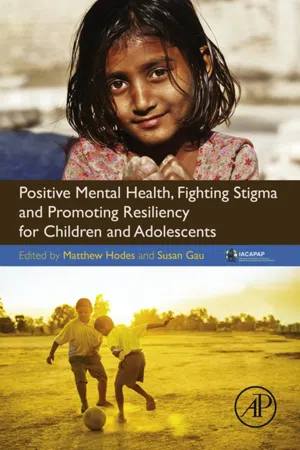Health Literacy and Mental Health Literacy: An Introduction
Mental health literacy (MHL) is the foundation for mental health promotion, effective acknowledgment of prevention of mental disorders, and provision of evidence-based mental health care (Jorm, 2012; Jorm, Korten, Jacomb et al., 1997; Kutcher, Bagnell, & Wei, 2015; Kutcher , Wei, & Coniglio, 2016; Kutcher, Wei, & Weist, 2015; Reavley & Jorm, 2011; McLuckie, Kutcher, Wei, & Weaver, 2014). Anchored in the larger concept of health literacy (HL), which has undergone substantial evolution over time (Nutbeam, 2008; World Health Organization (WHO), 2013), understanding of the nature and impact of MHL has similarly changed from its initial consideration as information about mental disorders to a more comprehensive construct considering MHL as an empowerment competency for people to participate in their own health care (Jorm et al., 1997; Kutcher et al., 2016). Most recently, mental health literacy has been defined to comprise four distinct but related components: understanding how to obtain and maintain good mental health, understanding mental disorders and their treatments, decreasing stigma, and enhancing help-seeking efficacy (knowing when and where to obtain evidence-based mental health care and having competencies to enhance self-care) (Kutcher et al., 2015, 2016).
Historically, HL was initially conceptualized as narrowly constructed within the health care delivery environment and focused primarily on the ability of people to be able to understand and apply medical information given to them by their health care providers, particularly with regards to improving adherence to treatment (American Medical Association Ad Hoc Committee on Health Literacy, 1992). Soon thereafter, however, this construct was expanded to include key components of health promotion and individual capacity for improvement of health-related behaviors: “the cognitive and social skills which determine the motivation and ability of individuals to gain access to, understand and use information in ways which promote and maintain good health” (Nutbeam, 1998).
More recently, understanding of HL has further evolved, now encompassing not only the individual’s capacity to seek health improving and health maintaining interventions but also to include the ability for self-care and for participating in the development of health policy and related activities designed to enhance health outcomes (Kanj & Mitic, 2009; Institute of Medicine, 2012; Schillinger et al., 2003; WHO, 2013). This broader construct is now understood to be a key factor in improving both individual and population health outcomes and has been identified as an important intervention to be applied for the decrease of health inequalities in populations (Berkman et al., 2011; Kickbusch, 2001; WHO, 2013). Indeed, according to WHO (2013), HL is “a stronger predictor of an individual’s health status than income, employment status, education and racial or ethnic group.”
With the increasing application of patient-centered health care interventions (such as the Wagner Chronic Care Model), HL has become an essential competency for health care recipients (Coleman et al., 2009; Schillinger et al., 2005). Educational interventions designed to enhance HL are understood to be an important component of health care capacity-building (Nutbeam, 2008; IoM, 2012; WHO, 2013).
Currently, the construct of HL can be considered to comprise the following components: competencies required to help a person obtain and maintain good health and identify illnesses, understanding of how and where to access and evaluate health information and health care, understanding how to properly apply prescribed treatments, and understanding health-related human rights and how to advocate for health improvements (WHO, 2013). To achieve this, HL needs to be: developmentally appropriate, contextually applied, and widely available through existing institutional and social vehicles such as schools, the workplace, and media (Kanj & Mitic, 2009; Nutbeam, 2008; WHO, 2013).
A similar evolution in understanding of MHL is also underway. The initial important work of Jorm et al. (1997) on an individual’s ability to recognize, manage, or prevent mental disorders, and early evaluations of educational interventions designed to address this focused primarily on one or two mental disorders (such as depression). This early construct was later broadened by Jorm and colleagues (Jorm, 2012; Reavley & Jorm, 2011) to additionally include: recognition of the development of mental disorders, knowledge of effective self-help strategies, and first-aid skills to assist others who have a mental disorder.
As the HL definition has evolved, so have others contributed to the evolving construct of MHL (Kutcher, Bagnell, et al., 2015; Kutcher et al., 2016). In step with the current conceptualization of HL, MHL is currently conceptualized to address the four constructs presented in the previous.section. This approach has integrated historically separate stigma interventions into the broader and more comprehensive construct of MHL. Such integration is supported both by the recognition that knowledge and stigma are not unique and separate constructs, but are related to each other and that knowledge enhancement does impact stigma reduction related to mental health and mental illness (eg, Chan, Mak, & Law, 2009; Corrigan, Morris, Michaels, Rafacz, & Rüsch, 2012; Pinfold et al., 2003; Thornicroft, 2006). This evolving understanding also parallels the WHO integration of human rights constructs into HL and other health care frameworks that have integrated health knowledge with stigma reduction strategies in other health conditions, such as HIV/AIDS and epilepsy (Birbeck, 2006; Brown, Macintyre & Trujillo, 2003; Heijnders & Van Der Meij, 2006; Sermrittirong, Van Brakel, & Bunbers-Aelen, 2014).
Global interest in school mental health is now becoming more evident (Kutcher, Wei, et al., 2015; Rowling & Weist, 2004). Foundational to all different school mental health approaches is the integration of MHL into the existing school curriculum structure because the school setting is contextually established to deliver interventions using a literacy approach (Jorm & Wright, 2007; Kutcher, Bagnell, et al., 2015). Furthermore, using educational strategies, including school curriculum and various knowledge-based interventions delivered in school settings may be more effective in addressing stigma in young people than other types of interventions (Corrigan et al., 2012; Kutcher et al., 2016; Pinfold et al., 2003). Finally, bringing mental health literacy into the school setting is not only consistent with a core activity of schools, but also fits well with the defi...
